How to Dye Your Clothes Using Natural Products
Dyeing clothes is one of the best ways to bring life back to clothes that are a little bit old and that might look a bit washed out. It is also a great way to freshen up certain garments and obtain unique and colorful pieces that you can’t just buy at any shop. And, fortunately, we can resort to natural products to do this instead of buying chemicals that could damage the environment.
5-Minute Crafts wants to show you how to dye your clothes with natural elements. We also wanted to show you what the final results look like when using some of these products and give you more options, so you can experiment and have fun.
What type of fabrics can be dyed with natural products
For natural pigments to adhere better to the garment or fabric you’re trying to color, it’s better to use clothes made of natural textile fibers. Those include linen, silk, cotton, wool, and esparto grass, among others.
How to prepare the fabric
Before dyeing the fabric, you’ll have to prepare it for the process. What you’ll basically do is to let it soak in a fixative solution for a while in order to prevent any dye bleeding. Here are the things you’ll need for this part of the process:
- A large container
- Salt
- Cold water
- A spoon or any other utensil for stirring
- Latex gloves (these should be used throughout the dyeing process to avoid staining your hands)
Instructions
The ratio we will use to make the fixative will be: half a cup of salt for every 8 cups of cold water. Based on this, and taking into account the size of the garment or the amount of fabric you are going to dye, double or triple the formula. You have to take into account that the piece must be completely soaked in the liquid for this to work. So there shouldn’t be any part left out of the water.
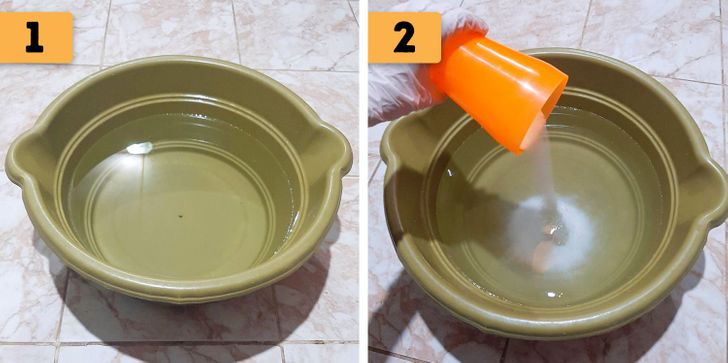
- Put the cold water in the container (its size will depend on the amount of fabric you are going to dye).
- Add the salt.
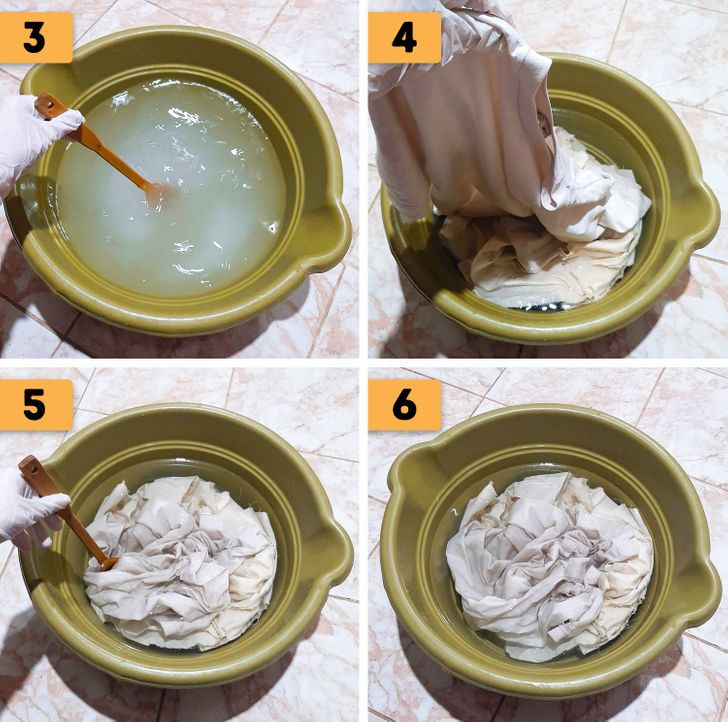
3. Stir the water with a spoon until the salt has dissolved completely.
4. Soak the garment or fabric you want to dye in the container. You can soak more than one at a time as long as they are all covered by the salted water.
5. With your hands or with a spoon, soak the garments well so that they absorb the water and are completely soaked.
6. Let the fabrics rest in the solution for about an hour. Then, take the garments out of the container and rinse them with cold water.
- Note: You can also make the fixative using one part white vinegar to every 4 parts of cold water. The rest of the process will be the same as the one described earlier for the salt water solution.
How to dye your clothes
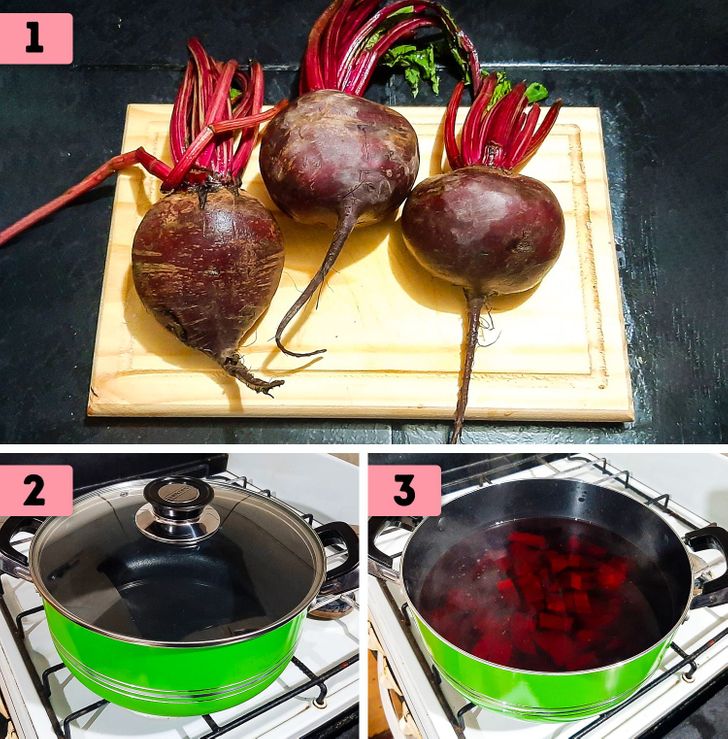
- Take the product you are going to use to dye the garments (in our case, we’ll go for beets), wash it well, and cut it into big chunks. You can remove the skin if it has skin, but don’t throw it away. Peels will also serve to give color to the garment.
- Put water in a pot and put it on the stove. Put it on high heat and bring it to a boil.
- Add the big chunks of the natural product you’re using to dye to the pot and let them boil for about an hour on low heat or at least until the water turns into the desired color. Afterward, remove all the pieces of the product and soak the clothes or fabrics in the colored water.
- Note: The pot should have just enough water for you to be able to soak the garment completely. If you add too much liquid, the final color of the dyed fabric will be much lighter. You must also take into account that, due to evaporation, the water level will decrease the longer you boil the product.
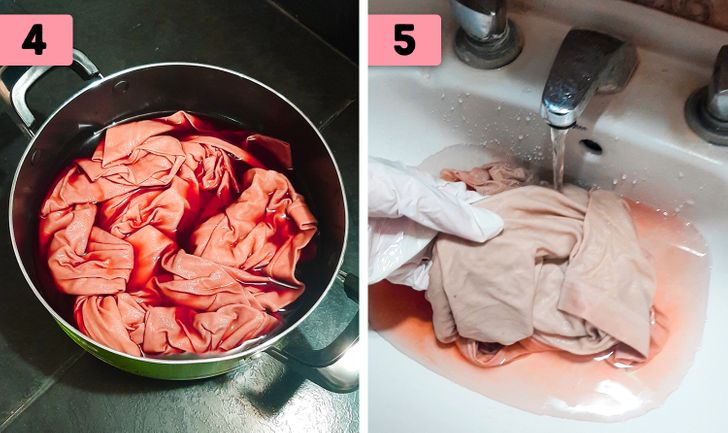
4. Let the garment soak in the water while still on low heat for another hour. After that time, remove the pan from the stove and let the garment rest in the warm water for a day or at least overnight.
5. Then, remove the garment from the pot and rinse it with cold water.
6. Extend the garment and let it dry in a very ventilated area or hang it out to dry outdoors. If you do hang it outside, make sure it’s always in the shade. Never let it be in contact with direct sunlight.
- Note: When you wash the garment as you normally do with other clothes, some of the color will be washed away. After you’ve dried it, you’ll see the final shade.
Results
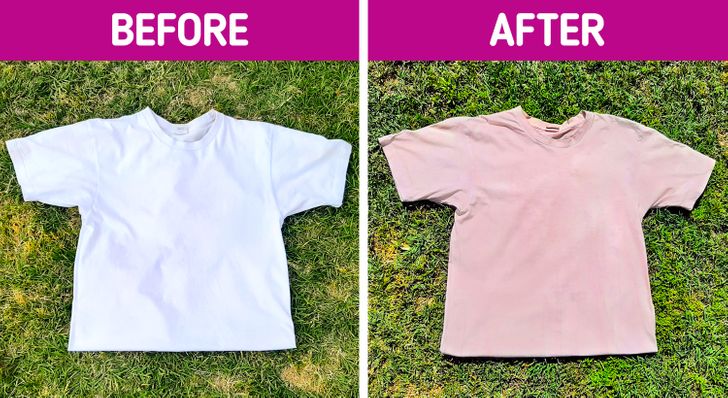
Results with other products
Strawberries — Light pink
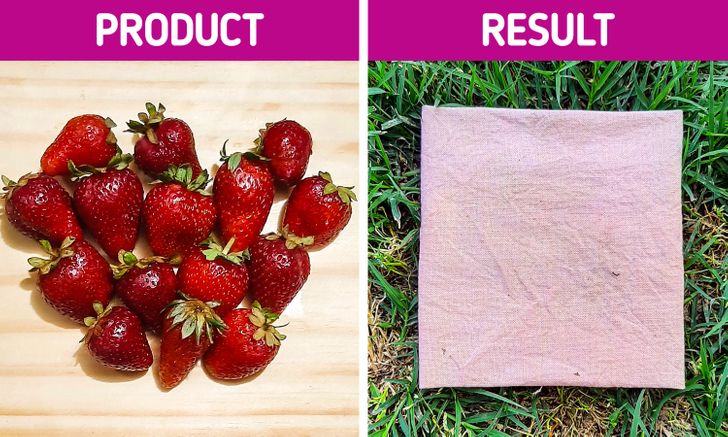
Red cabbage — Indigo, periwinkle
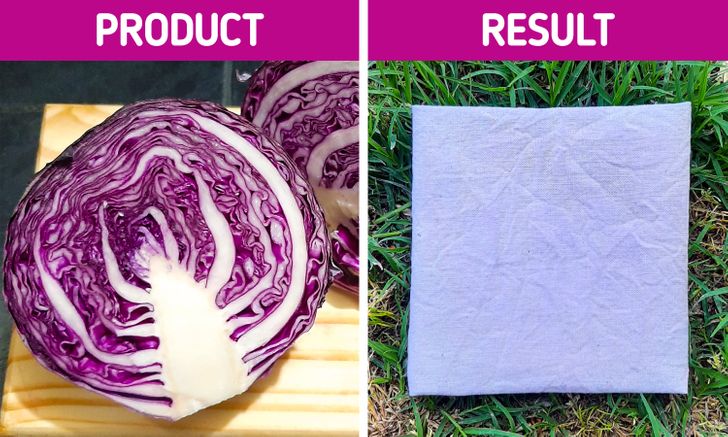
Artichoke — Light green
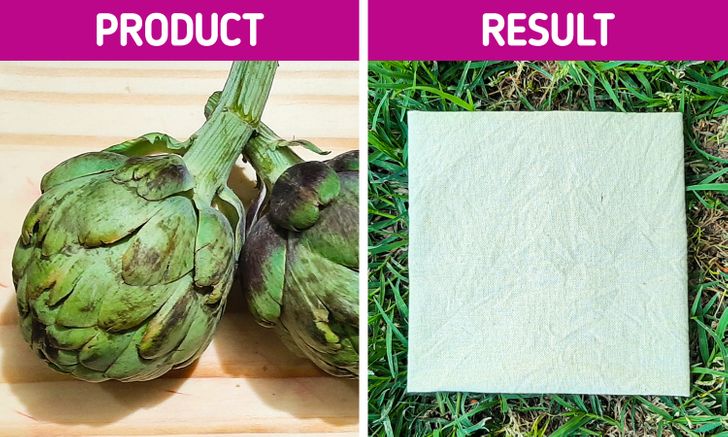
Onion peel — Vermilion
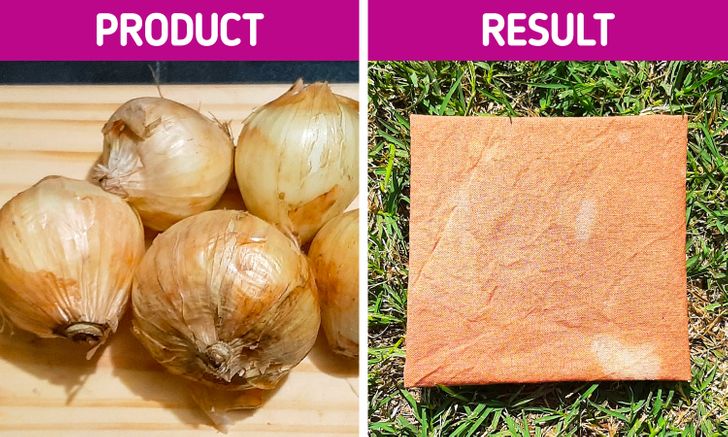
Avocado peel and pit — Dark pink
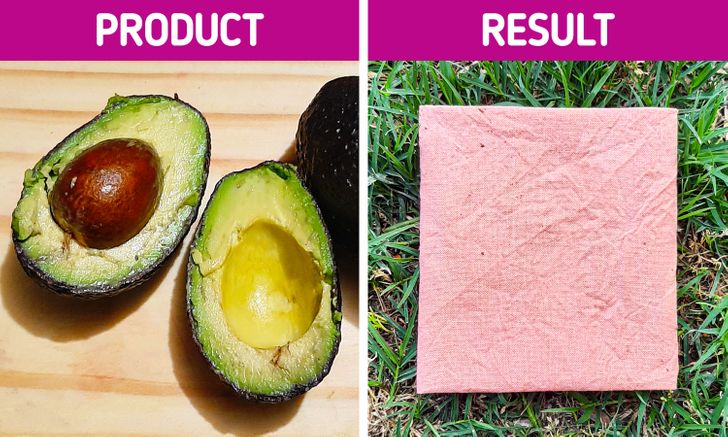
Turmeric — Bright yellow
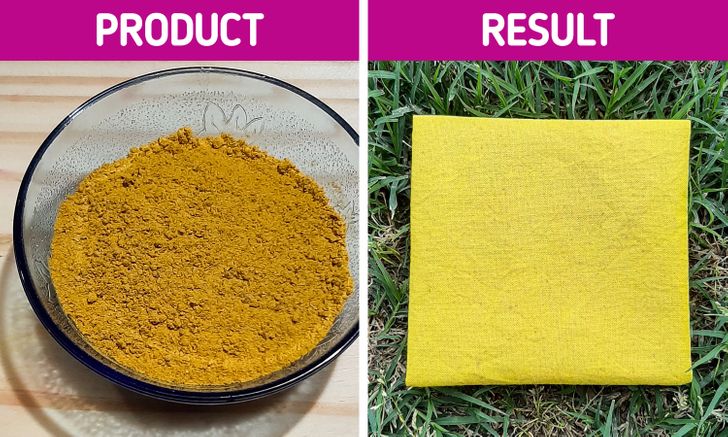
Coffee beans — Light brown
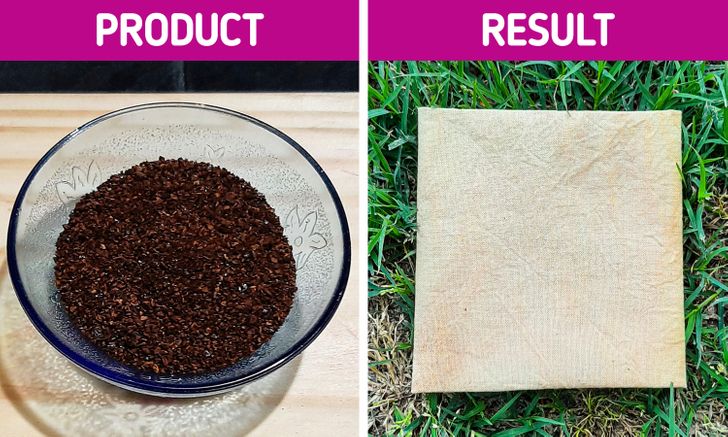
Bonus: Other products you can also use
